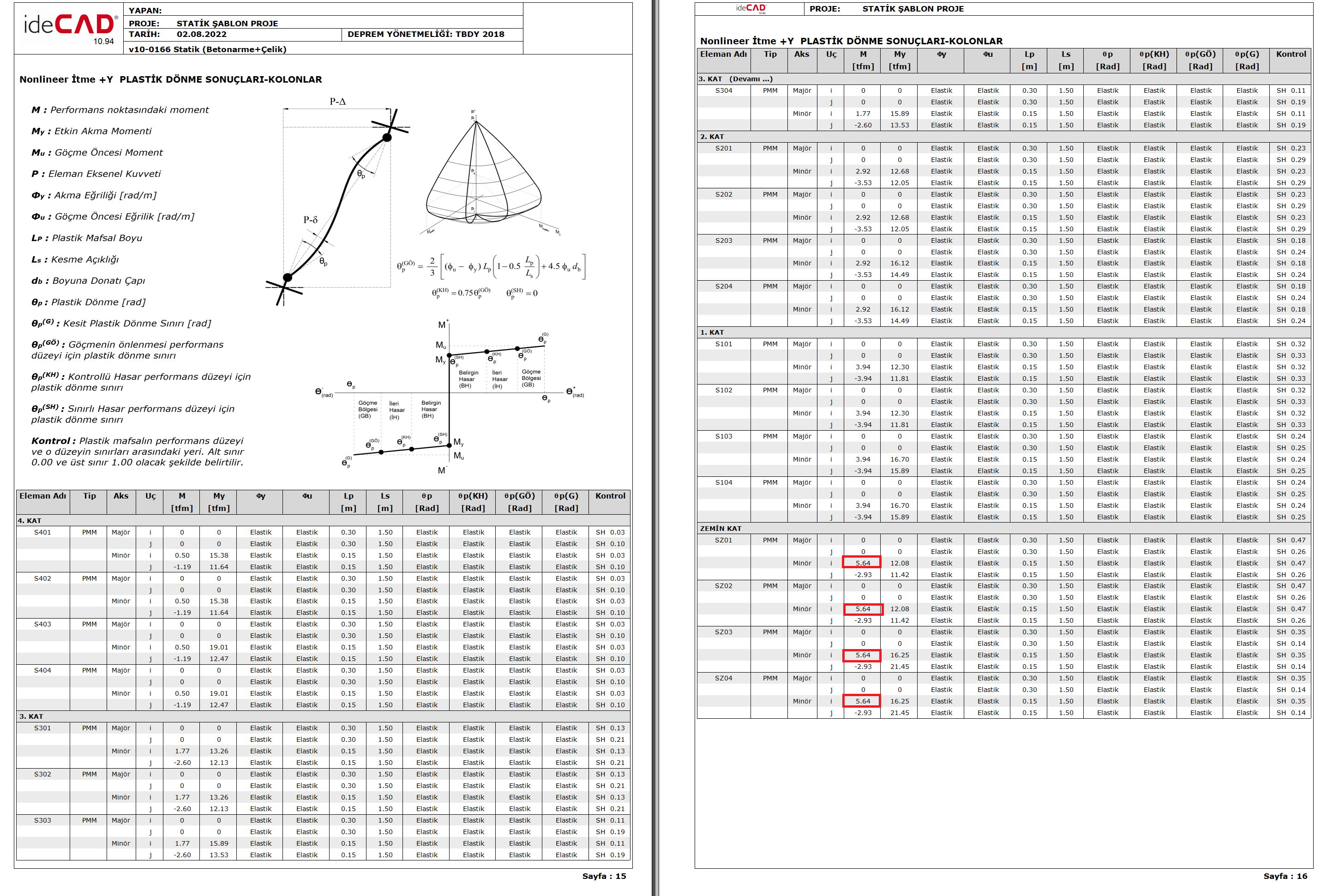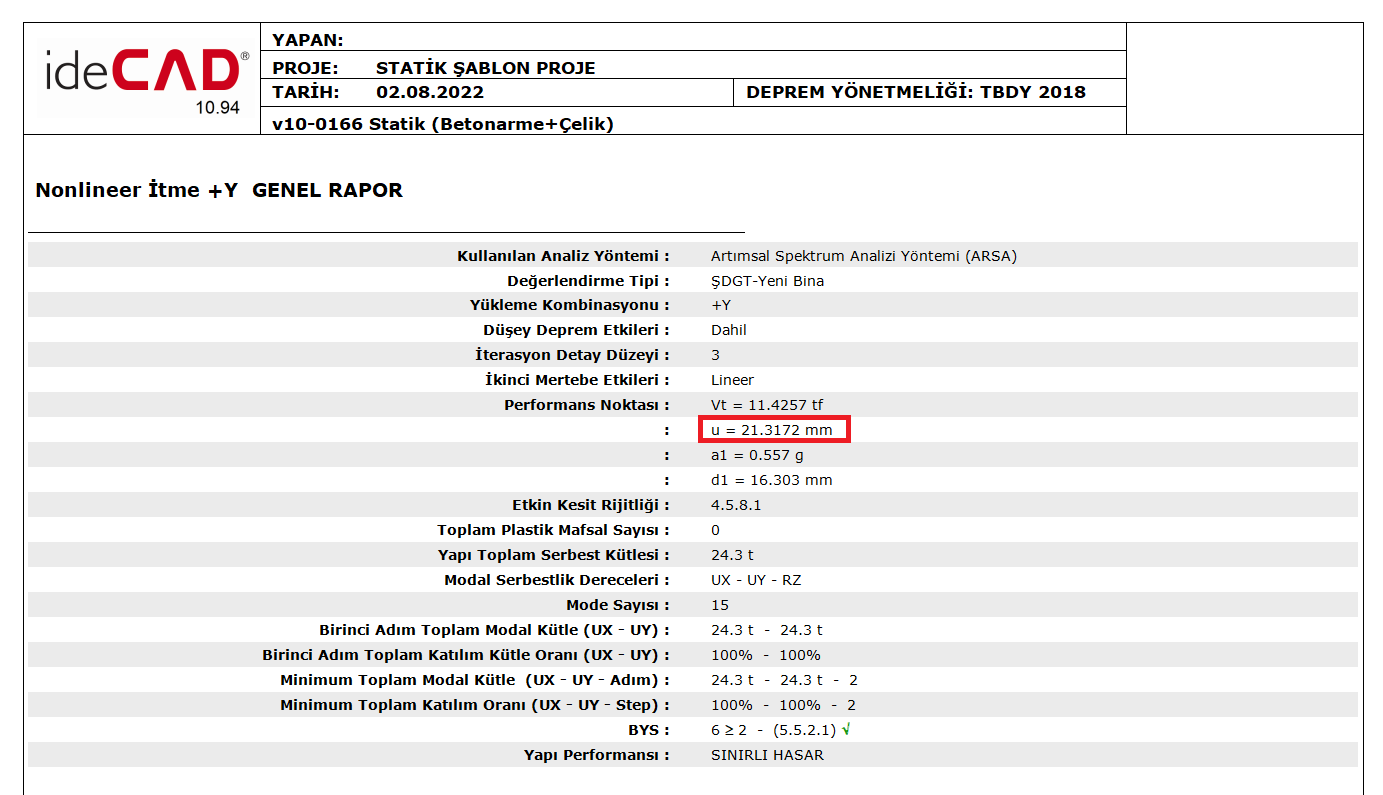Condition to be Shown in Accordance with 5.6.6.1
All internal forces and displacements obtained as a result of applying the Multimode Push Method for linear calculation using the initial (elastic) stiffnesses in the specific case according to the given design spectrum are exactly the same as the magnitudes obtained according to 4.8.2 based on the same design spectrum. automatically calculated.
TBDY Clause 5.6.6.1 - All internal forces and displacements obtained as a result of applying the Multimode Thrust Method for linear calculation by using the initial (elastic) stiffnesses in the specific case according to the given design spectrum, are obtained according to 4.8.2 based on the same design spectrum . It will be shown in the account report that it is exactly the same with the values obtained.
Modal Characteristics Determination The sizes obtained according to the and the sizes calculated in the first (i = 1) step of the impulse analysis are exactly the same.
Modal analysis made by using the earthquake design spectrum given in TBDY Section 4.8.2 , the largest modal response magnitudes calculated are obtained. Internal forces and deformations are obtained with the modal combination method detailed in Annex 4B.1 and Annex 4B.2 of TBDY . The modal combination method used here is the Complete Quadratic Combination (TKB or CQC) rule.
For multimodal pushover analysis, the condition specified in TBDY 5.6.6.1 is met in the PLO method. Because the modal analysis made in the initial step of the ARSA method is the modal analysis made according to 4.8.2 based on this design spectrum . Therefore, the results are exactly the same.
In the first step of the thrust analysis with the ARSA method, linear modal analysis is performed using the initial stiffnesses.
This is done according to modal 4.8.2 and the analysis results are calculated according to the design spectrum used so that R=1 D=1 I=1.
In this case, the modal analysis to be performed according to 4.8.2 using initial stiffnesses and the modal analysis performed in the first step of the ARSA method are exactly the same analysis. For this reason, the results of these two analyzes are exactly the same analysis results of each other.
In the example below, two different analyzes will be made and item 5.6.6.1 will be explained.
In the first analysis, the results of the modal analysis made in the DGT approach will be used. In the second analysis, pushover analysis will be performed with the ARSA method and the results at the performance point without plasticization will be examined. It will be seen that the results of these two analyzes are the same.
Since deformations caused by vertical loads are not taken into account in the modal analysis made in the DGT approach, only the concrete material with free weight for the columns is defined in the project. There is no weight on beams and floors. In the modal analysis performed in the thrust analysis with the ARSA method, the deformations caused by the vertical loads are accepted as the initial condition. To minimize these initial effects, only weights are defined for the columns.
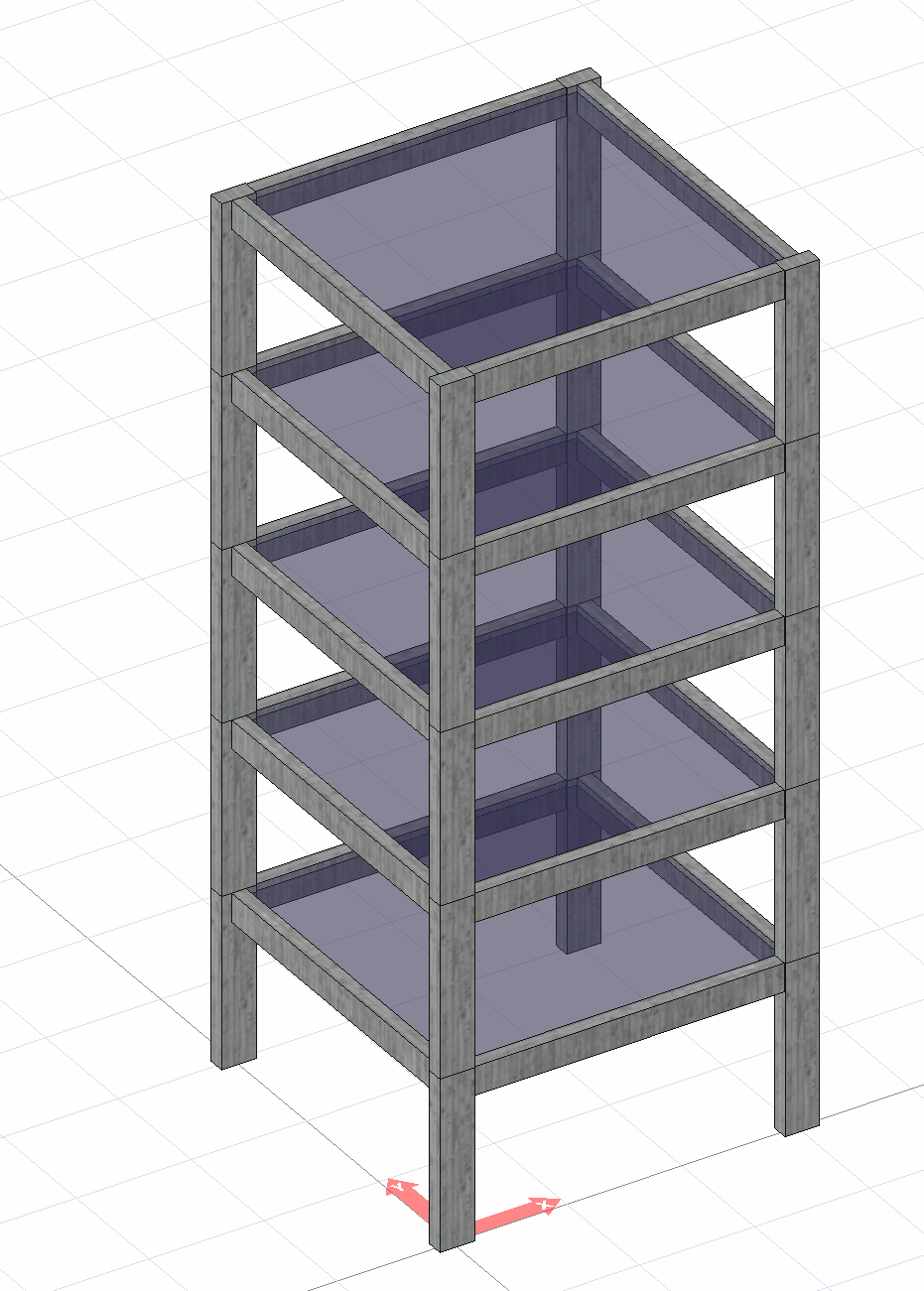
The displacement value in the Ey direction calculated as R=D=I=1 without the effect of eccentricity is read as 21.3 mm.
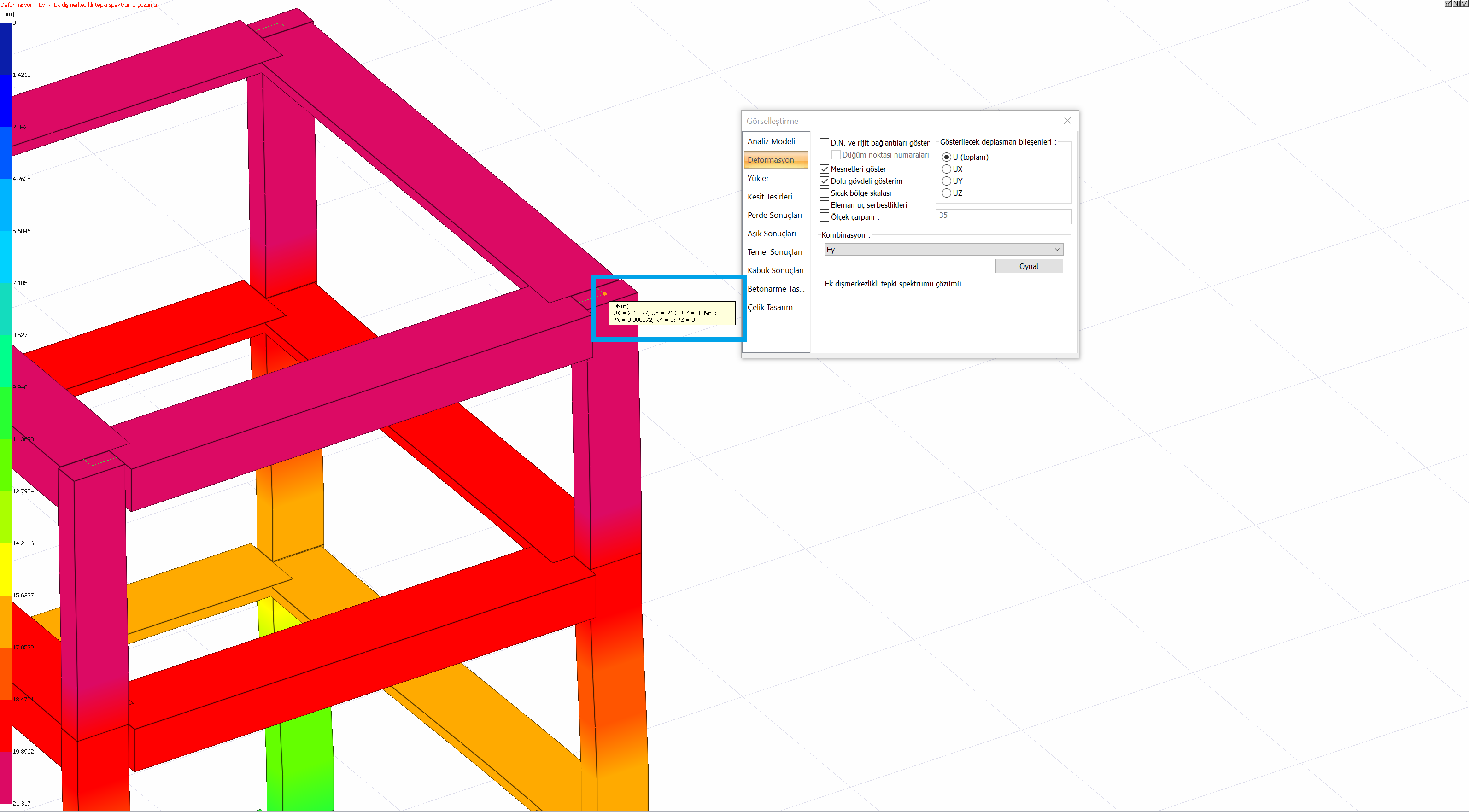
When the thrust analysis is performed with the ARSA method with the following parameters, the displacement value in the Y direction is 21.3 mm. Reaching the performance point in the first step of the pushover analysis will result in exactly the same results as the results in the Ey direction calculated as R=D=I=1 with the DGT approach in terms of displacement. For this reason, no plasticization situation was created in the ARSA method.
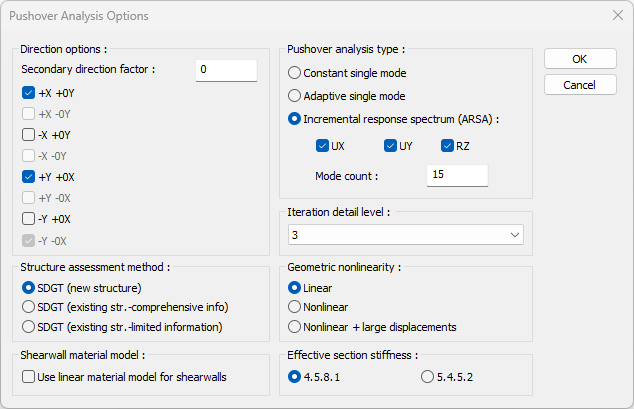
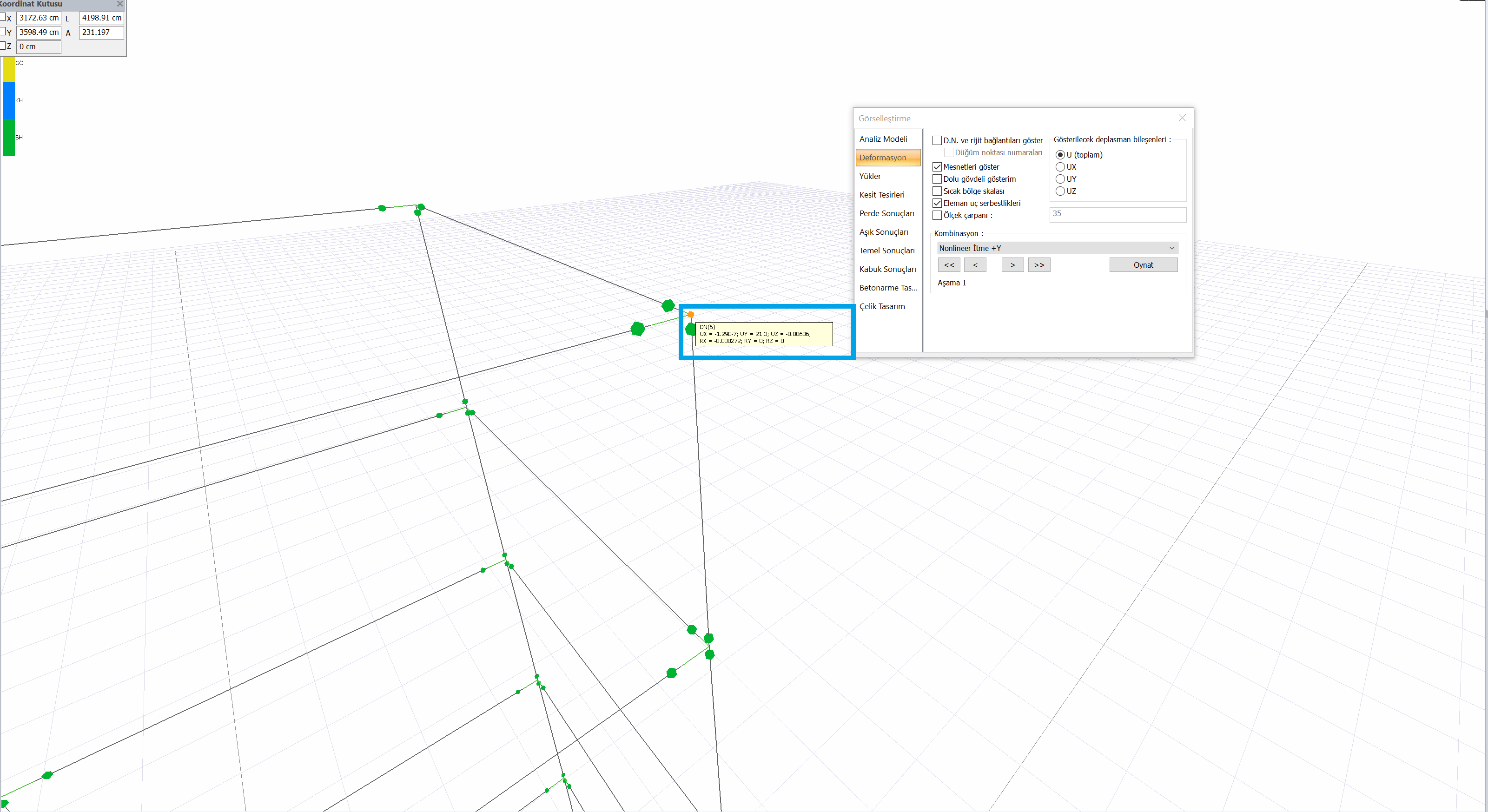
In addition, when looking at the thrust curve in the Y direction, it is seen that the performance point of 21.3 mm has been reached.
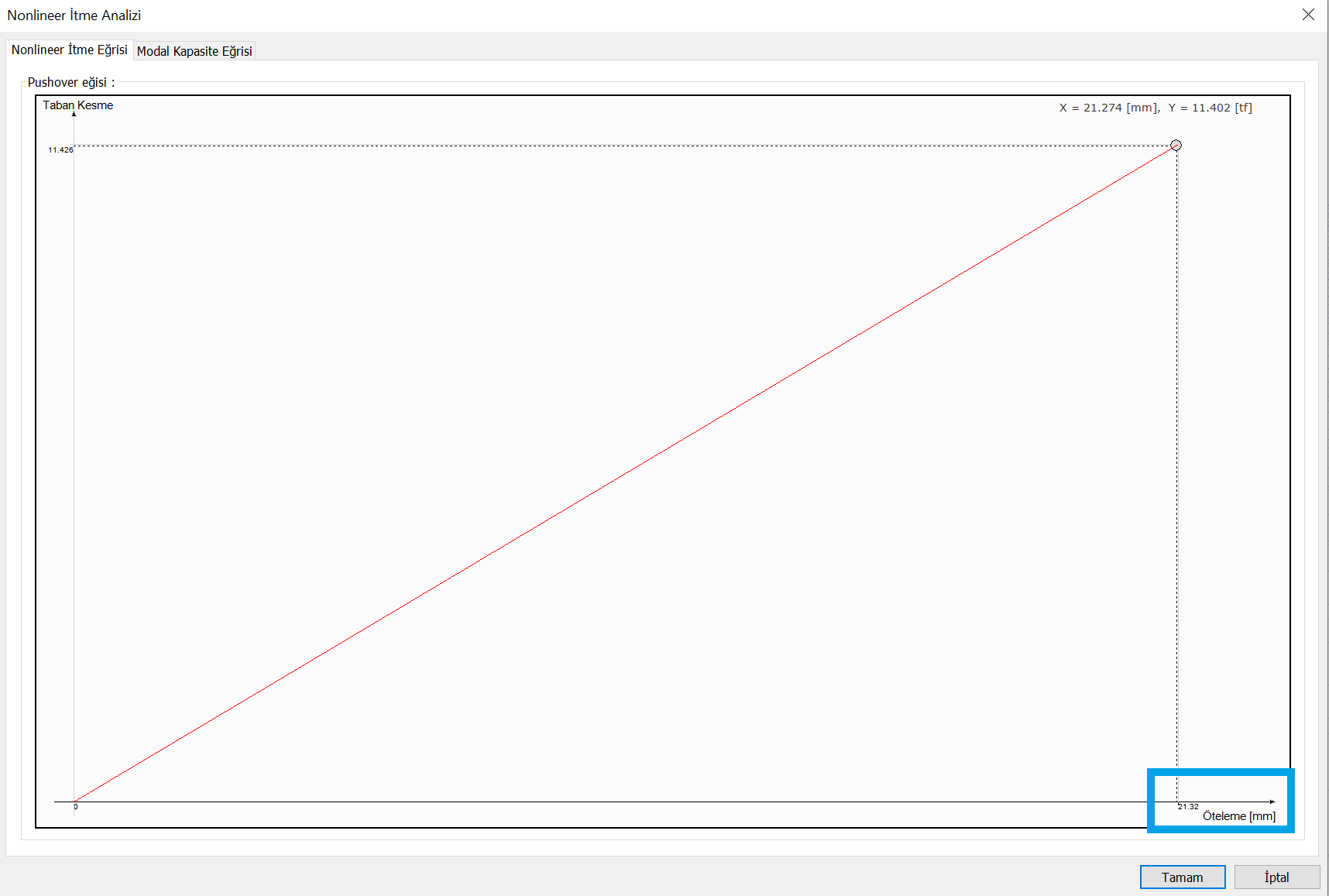
A similar comparison can be made for internal forces. In the modal analysis results in the Ey direction, calculated as R=D=I=1 without the effect of eccentricity, the M2 moment value in the lowest columns is seen as 5.644 tfm.

When the thrust analysis is made with the ARSA method, it is seen that the M2 moment value in the Y direction is 5,644 tfm.
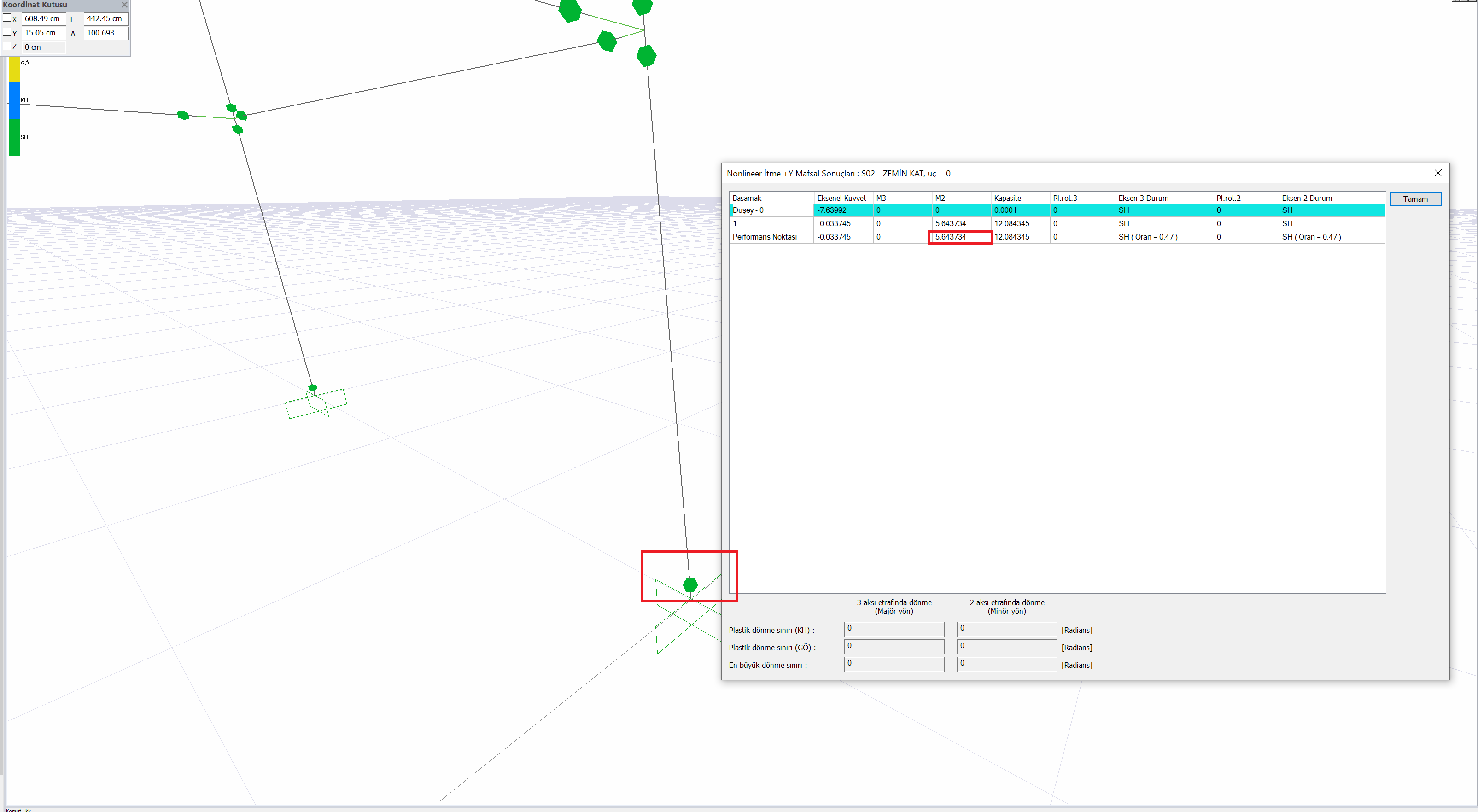
This comparison can be made for displacements or internal force values of all joint points.
In the calculation reports, it is seen that the M2 moment value in the Y direction is 5.644 tfm and the displacement value is 21.32 mm.
